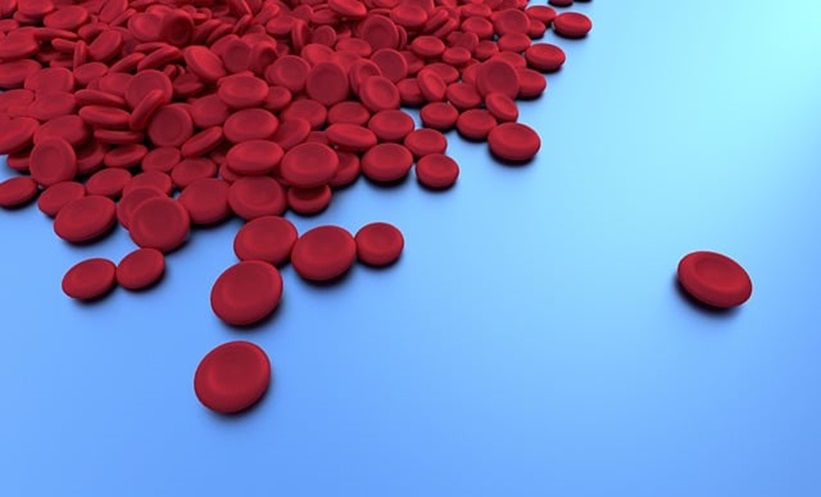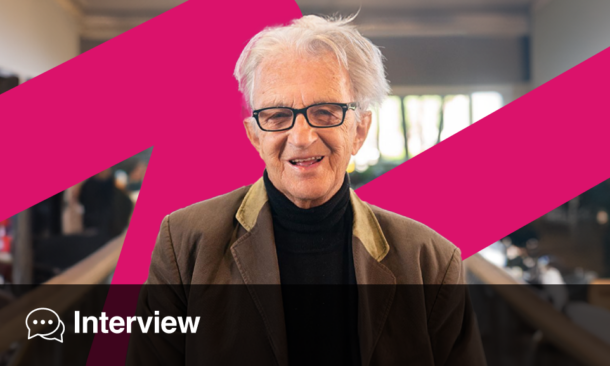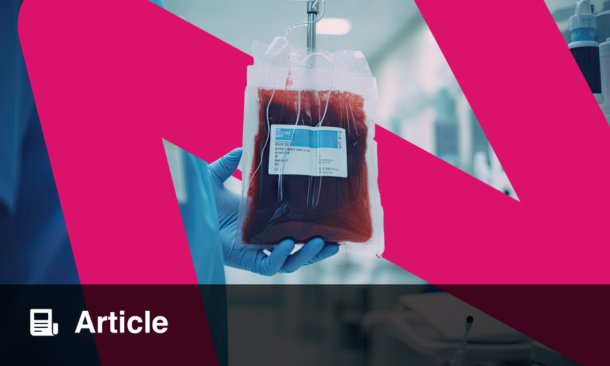Niamh O’Connell | National Haemophilia Director and Consultant Haematologist, National Coagulation Centre, St James’s Hospital, Dublin, Ireland; Clinical Professor, Department of Haematology, Trinity College, Dublin, Ireland
Citation: EMJ Hematol. 2024; https://doi.org/10.33590/emjhematol/10306394 ![]()
What motivated you to follow a career in haematology, and what continues to drive you today?
When I was a medical student in the small university city of Cork, in Ireland, there was one female consultant, and she was a haematologist. She was a wonderful clinician, who was very kind to her patients, and students, as well as other staff, and on some level I think this inspired me to think about haematology.
When I went on to do my House Officer training, one of the rotations I chose was haematology, and here I met another wonderful clinician. He was so thoughtful, and it was very interesting shadowing him, as he dealt with all sorts of blood abnormalities. The other thing he did was introduce me to the laboratory; our job in the UK and Ireland involves both clinical and laboratory haematology. There is a beautiful circularity here: seeing the patient with acute symptoms in an emergency department, reviewing the results in the laboratory, making a diagnosis, before going back to the person with a treatment plan, and looking after them throughout their treatment. I think most haematologists enjoy this aspect; it is very satisfying.
Those were the main things that convinced me haematology was for me, and I have never regretted it for a minute.
You are currently on the Executive Committee for the European Association for Haemophilia and Allied Disorders (EAHAD). How important are organisations like this in creating a European network, and a uniform message on the standard of care for people with rare disorders?
In a small European country like Ireland, there are relatively few haematologists and even fewer who are specifically trained and working in haemostasis. My network is essentially outside of my country and the community in haemostasis is global; we have both European communities and international organisations, which are critical for managing rare bleeding and thrombotic disorders. To give an example, in Ireland, we diagnose 4–6 cases per year of a very rare bleeding disorder called acquired haemophilia. If I am not communicating with other colleagues all around the world, I am never going to be able to advance the care of those patients. It is just essential that we have these networks across the world. The world today is so much more connected for sharing knowledge and information, and discussing challenging cases. I cannot emphasise enough how important this network is, and EAHAD as an organisation provides the framework for that network in Europe.
How is EAHAD helping to provide comprehensive care for bleeding disorders, and what are the barriers to achieving this?
Unfortunately, there is a large global inequity with bleeding disorders, and at least three-quarters of patients with bleeding disorders do not receive adequate care, including access to testing, or treatment, and organised care. Organisation, in particular, is integral to delivering high-quality care.
There are also differences in healthcare models. Even across Europe, we see a lot of differences. It is important to understand what is done differently, and also where our similarities lie. One of the things I find reassuring is that whenever we are presented with a case, the scenarios are often the same; our patients are not different, aside from small cultural differences. The differences tend to be in how care is organised in a country, as well as how accessible this is, and this can be a challenge.
EAHAD helps us standardise the key principles of care, basing this on the known ways to organise care, and deliver better outcomes for people and families with bleeding disorders. This allows countries, like Ireland, to measure their services against the European principles. EAHAD is moving towards an accreditation model, providing formal inspections to verify that institutions are delivering the best possible care. Knowing that the centres where they are undergoing treatment are registered with an organisation like EAHAD provides reassurance to patients that they are receiving the highest possible standard of care.
Another barrier to overcome is funding and resources to improve services for haematological disorders; these conditions are relatively rare and it can be difficult to convince the healthcare payers to prioritise this over other more common conditions. An audit by an external evaluator from a respected organisation such as EAHAD can highlight the aspects of care which need improvement, and this is often more effective in persuading funders to provide the necessary resources.
How have you incorporated a digital approach to your practice, and how can we expect to see bleeding disorders digitalised in the coming years?
This is something that the Haemophilia Service has been taking very seriously; we have established a Global Standards-1 barcode-based track and trace system in Ireland for all vials of factor since 2004; a national electronic health record for haemophilia since 2006, updated in 2017; and a patient portal which was rolled out in 2023. We believe that patients should have access to their information, and we are trying to promote equal access to treatment in the 38 hospitals across Ireland, wherever in the country you live.
In addition to barcoding, we have a national cold chain delivery system for patients receiving clotting factor treatment at home and for delivery to hospitals. We have made sure that every hospital with an emergency department has several doses of all the clotting factors, to support acute treatment in peripheral hospitals.
We have kept momentum to a paperless record, with electronic prescribing in use throughout our hospital. Significant training has taken place to ensure that nurses and clinicians are entering information in electronic systems in the correct way, to facilitate analysis of this data to support quality improvement in care in the future.
What can other establishments learn from the approach taken at St James’s Hospital, the leading comprehensive care centre for adults with bleeding disorders in Ireland?
In some establishments, probably more so in the past, if the name of a consultant was over a patients’ bed, this was the only Consultant looking after them. This is not how we work in our National Haemophilia Service; there are five Consultants and we work together as a team, sharing all of our information. The value in this is that the patient receives a consensus view, particularly if you have a bleeding disorder which is rare, and/or challenging. This might be the consensus from the five of us, or we may have discussed this with colleagues in Europe and beyond.
In our treatment, we try to always involve the patient in discussions, providing benefits and downsides to potential treatment pathways. We make them aware that we are all thinking about their case, and we are all trying to come up with solutions. At the end of the day, the patient is always the decision maker, but it is very much a collaborative and shared decision-making process.
In Ireland, patients are also partners in the co-design of our services. The National Haemophilia service works hand-in-hand with the patient organisation on access to services, types of services provided, access to new therapies, and procurement of treatment. We are greatly assisted by having a statutory National Haemophilia Council and this body oversees our provision of service and is a vital communication channel to the national health service for us.
One of the most enjoyable parts of our work in recent years is our partnership with the National Service for Haemophilia in Jordan. This has been really interesting; in some aspects I am reminded of services in Ireland several years ago, and we hope that other countries can benefit from our learnings, so that they too can incrementally improve, but at a faster pace.
You are involved in clinical trials. Could you outline some of the exciting novel therapies for bleeding disorders which are currently emerging, and are expected in the near future?
It has been an incredible 10 years in haemophilia care. I don’t think any of us anticipated how many new treatments we were going to have. This is really exciting, as the new treatments have far less of a burden for administration, and they provide much better protection. There is a completely different future available now for patients transferring to us from paediatric centres, at around the age of 16 years. I meet these kids in the clinic, and it is just wonderful to think they now have a much better quality of life ahead of them.
One of the exciting treatments that I think is making a big difference is gene therapy, especially for factor IX deficiency. Clinical trials have shown this provides very protective treatment with a one-off infusion. There will soon be a menu of different licenced subcutaneous treatments for preventing bleeding. Also, coming up very soon is an extended half-life factor VIII treatment; delivered once weekly, this can provide really high protective levels for a large part of the week.
All of these options provide people with the ability to fulfil their own goals and dreams, living more of a normal life, whatever that might be for them, without having to contend with regular bleeding or joint disease, for example. None of these treatments are curative, but they will allow people to put their condition to the back of their mind, and do all of the other important things they want to, with the reassurance of a comprehensive care team as a safety net.
What advice would you give to a young haematologist, looking to establish a career in the field?
I think having good mentors and advisors is always useful; if you can seek out someone in the field you are interested in as a trusted advisor, it is always a good idea to discuss your plans with somebody. You’ve got to follow your gut and your passions, too.
I think clinical research is important for patients and treaters. Clinical research, from sponsored and investigation-led research to basic science research, will help to improve the quality of the care, but it also keeps us fresh and interested, and connected to a network of colleagues in Europe.
I come back from meetings energised, with all sorts of ideas. I would say go to the meetings, meet your colleagues; these are going to be the same people with you from the start of your career, in the middle, and at the finish. You might as well get out there and meet them!







